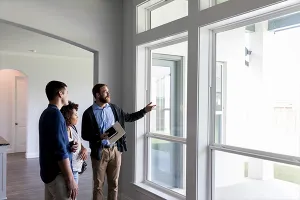Cities learn the ropes of neighborhood stabilization
Three years — and counting — into the foreclosure crisis, cities and suburbs across the country are fighting challenges on a scale not seen since “white flight” from central cities in the 1960s and 70s. In those days, the federal government attempted to help cities recover through programs that promised “urban renewal.” Today’s federal answer to the cycle of foreclosure, vacancy, vandalism and blight bears a far less ambitious name: Neighborhood Stabilization.
One home in foreclosure is a crisis for a single family. Five in a single block is a crisis for the neighborhood. Multiple neighborhoods in crisis threaten the health of an entire city. And multiple cities with gridlocked housing markets, shrinking budgets, growing blight and persistent unemployment constitute a continued drag on an economy that desperately needs a revivified housing industry for recovery.
Faced with this prospect, Congress in 2008 approved the first installment of the Neighborhood Stabilization Program (NSP), $3.92 billion. At the time, cities and suburbs were beginning to see waves of foreclosed homes coming onto the market with very few buyers. The vacant houses were magnets for vandals and thieves, who smashed windows and stole appliances, copper pipes and wiring. NSP would help the hardest-hit jurisdictions combat blight by acquiring abandoned homes, fixing them up and selling them, or in some cases, demolishing them. Congress approved a second round of $2 billion in the economic stimulus bill of 2009, and a third round in the Consumer Protection Act of 2010, for a total to date of nearly $7 billion.
The problem in the early going, though, was that very few cities and towns had the experience, staffing and resources needed to put the money to effective use. The local nonprofit housing groups who had experience in acquiring and rehabbing homes — when they existed — typically operated at a much smaller scale than the problem called for, said Craig Nickerson, president of the National Community Stabilization Trust. The Trust is a national nonprofit consortium that helps local governments implement stabilization programs.
“Cities have been reeling from the scale of this problem, and we are still in the early stage of cities building sufficient capacity to deal with it,” he said. “Three years into this effort to re-stabilize neighborhoods, we’ve made a good down payment, but we have a long way to go.”
Lacking the in-house expertise, and not wanting to create whole new divisions, most cities have contracted with nonprofit organizations to manage the acquisition and renovation of vacant properties. Those organizations have had to scale up to be able to handle dozens of properties a year, where before they may have done a handful each year, Nickerson said. Together, the city and their contractor(s) identify targeted neighborhoods, those with foreclosure levels that meet federal guidelines and that are most in need of stabilization. The local NSP entities contract with for-profit builders and developers to rehab buildings so that they are sound, energy-efficient investments for prospective buyers, who typically would make less than 80 percent of area median income. The logistical, legal, bureaucratic and organizational hurdles have proved enormous, but more and more local programs are humming along now — up to a point. “We figured out how to do the acquisitions, and we have figured how to do the renovation process,” Nickerson said. “Getting them sold is another matter.”
And that is where REALTOR® participation is especially critical, he added. “Who better than REALTORS® to help change the way people view those neighborhoods and market them to prospective buyers? We have a partnership with NAR to get state and local REALTOR® associations more in tune with what is happening locally.
Many REALTORS® said they didn’t want to be involved in a federal program, because they thought it had too many rules, was too slow. But more and more are seeing it as an opportunity as well as an obligation. Depending on the market, one-third to one-half of all sales are distressed — short sales or foreclosures. It’s not a question of waiting out the storm. For the next three to five years, a substantial share of the available commissions is going to come from here.”
Brian Bernardoni, the director of governmental affairs at the Chicago Association of REALTORS®, agrees. As a member of the NSP oversight committee for the mayor of Chicago, he helped formulate that city’s approach to the program. “REALTORS® need to be involved any time there are state, local or federal funds coming into housing, period,” he said. “We have the experience and the local knowledge. Government and advocate groups need the expertise from people who know the dynamics of the local market.”
The Chicago program, cited by Nickerson and others as a potential model, allows REALTORS® to apply for the right to handle acquisitions and sales within targeted census tracts. The city of Chicago contracts with Mercy Portfolio Services, a division of Mercy Housing, to manage NSP. So far, the city has received $169 million in federal funds, said William W. Towns, regional vice president of Mercy Portfolio Services.
Towns said the city began by going after one- and two-family homes in targeted census tracts, but then narrowed the focus even further to the most troubled blocks. The idea was to save areas such as Auburn Gresham, a predominantly black neighborhood 9 miles from downtown that had been revitalized during the housing boom. The strategy has helped by preventing physical deterioration from spreading to otherwise healthy parts of the neighborhoods, but selling the properties has proved extremely difficult, and the available money can only help so many neighborhoods going one house at a time. More recently, the program shifted to an emphasis on multi-family buildings, Towns said.
“Multifamily is more viable in this market, and there is a desperate need to rehab these large apartment buildings and busted condo conversions,” Towns said. “The economy is down, but people still need a place to live. If they can’t own, rental is the next option. In this economy, if we don’t do these projects they probably won’t get done. For the neighbors, the people who have walked past these vacant buildings with broken windows, seeing them fixed, the grass cut and the units occupied gives them a reason to hold on, to keep maintaining their own property and stay on through the struggle.”
As of the end of September, the Chicago NSP had acquired 812 units in 174 buildings and had rehabbed 55 units in 28 buildings. Eight buildings had been demolished and eight had been sold or leased. Zeke Morris, managing broker for Keller Williams in Chicago’s Hyde Park, said he and his team had helped acquire 70 of those properties and are now beginning to work on selling them. “The areas the city has gone in are underserved markets, so the available number of people to make purchases is diminished, because they have trouble getting financing.”
Not only that, but the rehab costs typically exceed the market value of the building, often by a lot. In some cases, lower-income buyers can qualify for a “soft second” mortgage. These are forgivable loans that diminish to zero if residents stay put a certain number of years, and must be repaid if the property is sold during that time.
In New Orleans, soft seconds are a crucial tool for neighborhood stabilization, said Mario Washington, a REALTOR® with Keller Williams who has been active in the program in his home region. While people in other cities use “under water” figuratively to describe mortgage debt that is larger than the home value, thousands of homes in New Orleans literally have been under water. Many residents who would like to return to neighborhoods where they lived pre-Katrina have been unable to do so because rehabbing their homes costs more than their potential market value, making financing impossible. With financial support from NAR, the New Orleans program polled a number of experts and potential participants to develop a soft second program that would help spur recovery in targeted neighborhoods suffering from both storm-caused losses, and to a lesser degree, foreclosure troubles.
“For me, this is a civic duty and a business strategy,” Washington said. “If you get involved, you help a community and get it redeveloped, and two or three years from now, I will have a leg up in markets that have stabilized.”
The problem outruns the resources
Despite some early successes, it has become increasingly clear that the scale of the problem is outpacing federal resources allocated to date. After a slowdown in the middle of this year, a new wave of foreclosures is rising, as prolonged unemployment, tight financing and economic fears continue to suppress the housing market. In Chicago alone, the $169 million federal investment — which will be recycled to some degree as properties are sold and money reused for stabilization projects — pales against a foreclosure problem that has been estimated at $3 billion, according to Towns.
In an acknowledgement of these challenges, President Obama in September included $15 billion in his Jobs Act proposal for a scaled-up NSP, dubbed Project Rebuild. The fund would broaden from residential-only to include stabilizing commercial properties as well.
“There will never be enough money for stabilization if we don’t also do what we can to keep people in their homes,” Nickerson said. “Cities need to pro-actively control the destiny of properties even before the foreclosure, during the short sale, or doing more loan modifications so we can keep families in those homes without foreclosure.” Indeed, Chicago and other cities already are making efforts in this direction, but will need federal support to make it work, he said.
“We’ve stopped the flood and we’re slowly moving back in the positive direction,” said Morris, the Chicago REALTOR®. “If over the next two to three years we keep pushing, I believe that it will work. But it’s a process, and you can never let up.”








